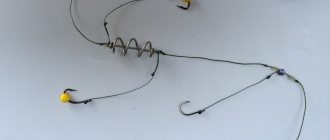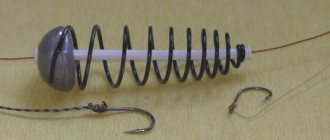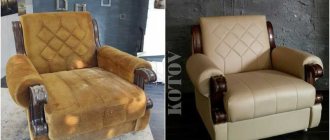Peculiarities
This chair model is chosen by travelers, summer residents and artists.
The practicality and compactness of this model does not require proof. Today, there are folding camping versions of almost all the pieces of furniture familiar to us: tables, stools, folding beds, loungers and the like. The main advantage of such products is, of course, compactness and mobility. Traveling several tens of kilometers a day, it is pleasant for a tourist to land on a folding chair during a rest stop. When you travel by car, it is important to have a compact chair, and if you move on your feet, then this becomes a necessity. Large items are not suitable for camping. Products with a back will be especially comfortable.
However, do not think that all folding chairs are a cheap and awkward spectacle that is only suitable for going to the forest, tinkering in the garage, or, at best, for country gatherings. Today you can buy or make yourself very stylish and cozy chairs for a modern kitchen interior. There is no shame in showing such products to guests, especially if the item of pride is made with your own hands.
Anyone can assemble a homemade chair, the main thing is to follow the instructions and drawing.
No special carpentry skills are needed for this undertaking. You just need to know how to use a hacksaw and hold a drill in your hands. The folding chair is assembled according to the drawing, like a construction set.
There are three main materials used to make folding chairs: metal, wood and plastic. Plastic is a light and cheap material that is easy to clean. It is not able to withstand a large body weight and becomes deformed if it is located near heating devices. This material is short-lived, so for constant use it is better to choose something stronger. For example, chairs with a metal frame.
Folding models made of aluminum are reliable and strong. They are not afraid of rust and can withstand heavy weight. The best option is wooden products. They are safe, beautiful and reliable. Such a chair will cost more, but will also last a long time. In addition, even a beginner will be able to assemble a folding camp chair from this material.
Chair requirements and options
Regardless of the material chosen for the construction of the structure, such furniture must have the following qualities:
- Sufficient stability so as not to be afraid of any terrain.
- High strength, otherwise the legs may give way “from fatigue” at the most crucial moment.
- Light weight and compact dimensions, because bulky chairs, even folding ones, are difficult to place in the trunk. If the activity involves long walks, the lightness of the design comes to the fore.
The most common folding seats are stools. They, without a back, are lightweight and easier to manufacture. However, sitting on such a structure is not very comfortable. Chairs with a back are already more like typical furniture that cannot be transformed. To ensure lighter weight, seats and backrests are often made of fabric. The hit material for homemade chairs, folding and regular, is wood, but these camping structures are often made of metal or plastic.
Varieties
The most popular types of chairs of this type are a model with a back and without a back. A product without a back is easier to make. This option will require less material. But a model with a backrest is much more convenient and practical to use.
The wooden back will create the integrity of the product's structure. Sometimes a seat with a backrest is made of durable fabric stretched over a frame base. According to the types of legs, there are straight, crossed and solid. A do-it-yourself folding chair is made not only from wood. It comes in metal and plastic.
For such products you need a special tool. Without certain skills, it will also be difficult to do it yourself. The wooden model is quite simple. A wide range of materials, affordable prices, as well as unpretentiousness of the material when working.
"Array"
These models are the most common, and they are also among the easiest to manufacture. There are no curly lines or changes in geometry, which is why these chairs are recommended for assembly by novice furniture makers. They are stable, reliable, durable and fit well into the interior of wooden houses or dwellings that are decorated in a rustic style.
The only drawback of this type of chair is its massiveness. But it is partially leveled out if you use low-density wood. And decorating it like a “heavy” species, such as oak, is not so difficult. Some technologies can be found by following this link.
For living rooms and dining rooms, you should focus on any of the modifications of a massive chair, which differs from the standard options in a soft seat. When assembling such a piece of furniture, it is advisable to combine materials. It is advisable to make the frame from solid wood, and reduce the parameters of all elements somewhat - carved legs, a more elegant back (not solid, but made of slats). For the seat, you should take plywood, which is sheathed.
Another variety is the armchair chair. It is somewhat more difficult to make, but for a living space, a recreation room, or a terrace, these are the most acceptable models. Such comfortable chairs can be additionally upholstered, with shock-absorbing material placed under the covering; here a lot depends on your own imagination.
If a chair is made for a child, then “solid” is the best solution due to its stability. It is guaranteed that a naughty baby will not roll over with the high chair.
"Cot"
These chairs are more suitable for use on the premises or in a country house. In addition to being easy to transport, they are convenient in rooms with a small area. Such a chair can, when folded, stand somewhere against the wall, on the side of the closet, and not take up useful space. If necessary, it is easy to transfer it to the “working position”. It is precisely these models that are most often used in garden plots, loggias, terraces and other places where the low weight of the product, size and mobility play a special role.
If the folding chair is assembled from multi-layer plywood, then additional ease of use will appear; it (given its light weight) can be hung somewhere on the wall or under the ceiling.
A lighter design can also be made. In such a “folding bed” the seat (and sometimes the back) is made of canvas. For example, from tarpaulin. For a summer cottage, going on a picnic or fishing - a good option.
"Transformer"
This is the name for chairs that can easily be turned into a multi-tiered shelving unit, stepladder, or something else (depending on the features of the design). These models are great for apartments. Whether it concerns cleaning, repairs, or attaching something to the wall (ceiling), you won’t have to look for a sliding ladder - it’s always at hand in the form of a “transformable” chair. And for those who like to grow flowers in the house, summer residents, who at the beginning of each year have problems placing containers with seedlings in their rooms, this is simply an irreplaceable thing.
Tripod stool
This furniture, which has 3 legs, can be useful for fishing or hunting. Its advantages are light weight, low cost, speed and ease of assembly. The downside is that there is a high probability of going on a “free flight”, especially for people with a decent weight. To make a stool you need the following materials:
- 3 wooden blocks approximately 600 mm long, it is better to take round elements;
- triangular piece of fabric, thick leather is optimal;
- 2 bolts: long and with a loop;
- 6 washers: fastening, decorative (3 pieces of each);
- 2 nuts.
In accordance with the drawing, holes are drilled in the middle and on top of the future legs. They are also made in the corners of the cut fabric. The two legs are connected using a long bolt. A screw with a loop is put on it to secure the third support. Finally, the fabric is attached to the legs with decorative washers. For convenience, you can sew on a strip that will make transporting the chair easier.
Real folding chair
The drawings of folding chairs with a backrest have differences, but they are small, since the principle of all designs is similar, and the manufacture of such furniture cannot be called super complicated.
If we consider all the elements, the chair consists of:
- Pairs of rear short legs 20x40x475 mm. Often, diagrams provide for an upper crossbar and a leg - lower jumpers for greater strength, but in this model they are absent in the picture (1).
- Two front legs (2), the upper part of which acts as a backrest (20x40x837 mm).
- Two parts - backrest crossbars and a lower leg (3). All three are 20x70x403.
- Two side drawers for the seat (5) - 20x40x470 mm.
- Seat parts (6) - 6 elements 20x50x440 or a solid plywood sheet (15x440x470 mm).
In addition to the main parts, you will need dowels (15x30 mm), glue, bolts with nuts and washers (diameter 8-10 mm, length - 50 mm), self-tapping screws. You can’t do without tools, you need:
- jigsaw or circular saw;
- router for rounding corners;
- Sander;
- miter box.
"Preparation of blanks"
All elements are cut out, polished, and the corners are rounded with a milling cutter. The lower parts of the front legs are cut off, the angle is the same as in the previous “recipe” - 30°, so a miter box is necessary here too. The next stage is marking the grooves of the long legs. There are three of them for each part - 2 for the back and one for the leg. The grooves are cut with a router or drill (drill - 9 mm), then the holes are combined using the same chisel and ground.
On the bars rounded at the bottom for the drawers, holes are made for dowels; their depth and diameter are 15 mm. These fasteners, intended for the grooves of the rear legs, are placed on glue. In the middle of the drawer, drill a through hole for screws. They will attach the front legs. Finished parts are polished.
Then prepare 5 identical parts. Two of them will be the back, one will be the leg of the front supporting elements, 2 more additional ones, not shown in the picture, are the leg of the rear legs and the crossbar, which gives them rigidity. Spikes are formed in these parts, their dimensions are 9x15x50 mm. They are cut out with a router or jigsaw, flaws are corrected with a knife, and smoothed with sandpaper.
The hind legs are prepared. They are rounded at the top and markings are made for three grooves: the middle one for the dowels in the drawers, the upper and lower ones for the lintel and prong, respectively. Before cutting the grooves, check the symmetry of the markings of both elements.
Assembly sequence
This stage, of course, always starts with the seat. The boards intended for it are distributed evenly among the sides, not forgetting about their parallelism and perpendicularity to the side parts. Having made the markings, they are fixed with glue and placed in clamps. After it dries, 2 holes are made in the edges of the boards for fastening to the drawers, and self-tapping screws are screwed into the countersunk holes.
Assemble the rear frame. Having installed it in the dowels protruding from the drawers, they simultaneously glue the leg and the upper jumper. The structure is tightened with clamps, waiting for the joints to dry. The top crossbar and leg are glued to one front leg. Afterwards it is fastened to the drawer with a screw. Then the second leg is attached to it with glue, which is also connected with a screw to the side of the seat. The glued and screwed chair is again fixed in clamps until completely dry.
Despite the fact that it is not at all difficult to build a folding chair with your own hands, a drawing is a necessary condition. It is better to find it rather than “invent” it yourself, since ready-made circuits have been tested, reliable and accurate.
How to build a solid folding chair, see this video:
Breed selection
When it comes to choosing the type of wood for making furniture, preference should be given to strong and durable materials with high technical characteristics. The wood itself should be free of knots, cracks and other visible defects.
The following types of wood would be a good choice:
Birch. Refers to the most common option when making furniture at home. Its main advantage is low cost and good technical characteristics. In terms of its qualities, birch is similar to beech. It glues well, is etched with stain, and polished.
Oak. This type of wood is characterized by high strength. Furniture made from it will serve its owners for decades without losing its attractiveness and original technical characteristics. But at the same time, oak is difficult to process. Without some experience in carpentry, it is better to choose softer and more pliable wood.
Beech. This breed is durable, resistant to negative factors and extremely attractive. Its color palette varies from pink-yellow to red-brown. Beech can be processed well with various lumber, sanded and tinted.
Larch. Has a beneficial effect on people's health. The color range of this type of wood is more than 12 different shades. Furniture items made from it are original and unique.
Linden. It lends itself well to processing, as it is a soft type of wood. But keep in mind that linden does not stain well. It has high moisture-resistant qualities, which increases the demand for it among home furniture makers.
Maple. It is quite rare among furniture makers. If you have maple boards at home, try making a folding chair out of them. This material is strong, durable and extremely beautiful.
Pine is affordable and easy to process yourself. But it is too soft and absorbs moisture well. When choosing pine for making a chair, it must first be treated with antiseptic agents.
Advice: before using the wood, it should be prepared - remove the shavings, clean it, treat it with antiseptics.
How to make?
Whatever business you want to start, proper preparation is important for a positive result. When making furniture, it is better not to improvise, but to prepare everything in advance. Decide on the place of work, allocate a separate space for each stage. Tools and materials should be at hand.
Materials
Wood is the most accessible and inexpensive material for making a chair. Wood species that are ideal are oak, birch, beech, larch. They are dense, resistant to prolonged exposure to water and sun. Pine boards are not suitable due to their softness and low water-repellent properties. The tree should not have knots, cracks, or dark spots.
Metal will also be suitable. Pipes made of duralumin or steel are what you can use to make a chair at home. Check them for chips, dents and other deformations.
It would also be acceptable to purchase plumbing pipes made of polypropylene or polyvinyl chloride. They are easy to cut, bend well, and have various fittings in the form of corners and plugs.
In addition to the basic ones, additional materials needed in the work are prepared, for example:
- Fastening and connection means: bolts, self-tapping screws, screws, screws with washers and nuts;
- Glue;
- Wooden dowels;
- Steel rod;
- Fabric for seat and back;
- Other.
You can prepare any material for work yourself. The wood is treated with sandpaper and coated with special products for additional protection. The edges of the pipes are also cleaned.
Required Tools
Each material and complexity of making a model requires the use of a specific tool.
But in all cases you will need:
- Files or jigsaw;
- A clamp designed for making straight cuts or at an angle;
- Tape measure, construction angle, ruler;
- Pencil or marker;
- Screwdrivers or screwdriver;
- Drill;
- Sandpaper or grinder.
Using metal, holes are made with special drills; you may also need a pipe deformation device. To work with fabric you will need scissors, thread and a needle or sewing machine.
Drawing and marking
To speed up the process, draw a drawing. Given the simple shape of a folding chair, this should not be difficult. There is no need to draw three-dimensional models; the main thing that is required is the width and length of each part and their location.
Based on the drawing, take the prepared materials and mark them with a tape measure, pencil or marker. You need to measure not only the required length, but also the locations of the holes.
Chair stool with round seat
Unlike the previous “almost furniture”, this sample is already a full-fledged, but mobile piece of furniture. To build a structure you need a whole set of tools:
- clamps;
- miter box;
- Sander;
- screwdriver;
- milling cutter;
- jigsaw
Required materials - basic and improvised:
- furniture board (preferably beech), dimensions 24x400x1120;
- furniture hinges - 4 pieces;
- threaded rod (8x250 mm) with nuts;
- self-tapping screws (3.5x16 mm);
- tinting varnish;
- dowels (8x50 mm);
- glue - PVA for wood or carpentry.
Preparing parts
Cut out a circle, its diameter is 350 mm. To make a handle for the future seat, use a feather drill (22 mm). At an equal distance from the edges of the circle, make 2 holes spaced 120 mm from each other. They are connected by cuts.
Having prepared the remaining structural elements, cut out a long groove on the supports using a straight cutter (8.5 mm). If it is missing, drill holes, the depth of them and the groove is the same. Then, using a thin chisel, remove the jumpers between them. Another option: drill two holes along the edges, and cut out the channel with a jigsaw using a rip saw. The upper ends of the supports are sawn at an angle that is exactly 30°. If you do not follow it, the stool will not work. The bottom of the parts is rounded.
Assembly, processing
The jumpers (legs) are secured with dowels, pre-coating them, holes and adjacent parts with glue. Excess is removed, and the elements are fixed with clamps until dry. The hinges are attached to the seat with self-tapping screws. To camouflage the pins connecting the legs, a tube is cut out: if there is no lathe, it is made multifaceted with a plane.
The semi-finished stool is sanded with sandpaper and at least two layers of tinting varnish are applied. To give the wood a special texture, it is recommended to wet it several times before sanding, then dry it completely.
Chair assembly
Before assembly, prepare the wooden parts in advance. To begin with, we measure them correctly, saw them to size and sand them. The wood should be smooth, so you need to get rid of burrs. It all starts with the seating position. We take slats cut in advance according to the parameters and fasten them to the support bars. For assembly you will need self-tapping screws.
The hit material for homemade chairs, folding and regular, is wood.
After this, we proceed to create a supporting structure from the front legs and back. We attach the slats for the backrest to the legs on top, and the crossbar to the bottom. Next we make the rear supports, i.e. We attach the lower and upper crossbars to them.
You can make creative folding chairs.
We connect the two frames together using nuts and bolts. Attach a seating area to the front. It is necessary to drill through holes in the frame and seat supports. Fasten the structure using bolts. We recess the fasteners that extend to the surface of the back or seat a little so that the edges do not stick out.
The advantages of the chair are light weight, low cost, speed and ease of assembly.
If everything is done correctly, the seat will move without problems in the frame. When unfolded, the rear of the seat rests against the rear crossbar. Accordingly, you get a comfortable folding chair that is easy to use.
Additional Information! Once assembled, the chair can be decorated to create a custom design.
How to make the simplest life-size version?
We will look at making a simple folding chair without a back from plywood and fabric. Since these materials are easy to work with, they are characterized by high technical characteristics and low cost.
To manufacture parts and assemble the structure, we will need the following tools:
- drill;
- screwdriver;
- construction stapler;
- wood hacksaw;
- sander;
- milling cutter;
- scissors;
- jigsaw;
- pencil and ruler.
The materials we will use are:
- plywood, at least 2 cm thick;
- foam;
- cardboard;
- glue;
- self-tapping screws;
- upholstery fabric;
- paints and varnishes.
Important: the color of the fabric is chosen according to the overall interior of the room or landscape design where the stool will be located.
So, step by step the production and assembly of a simple model of a chair made of textiles and plywood will look like this:
First we create a template. It is drawn with a pencil on paper and cut out strictly along the contour. Next, using these patterns, we make blanks from plywood. It is most convenient to cut out the components of a piece of furniture with a jigsaw (if you don’t have one, you can use a hacksaw).
Next, we carefully polish all the parts so that they are free from roughness, defects and other flaws. For these purposes it is better to use a grinder. If you don’t have it, you can use sandpaper of varying degrees of grit. After all the parts are ready and cleaned, we begin to create the holes for the hinges. Here you need to check the drawing several times so as not to spoil the future product with unnecessary holes. It is best to use bolts and sleeves as hinges. For the strength of the product, it is additionally recommended to secure the sleeves with glue. Now we begin to form the holes for the tenons that it needs to hold it open. We make the seat from foam rubber and upholstery fabric. The seat is fixed to the frame with a furniture stapler. Then you can proceed directly to assembling the product
Here it is also important to check each step with the existing drawing.
After assembling the chair, you only need to carry out finishing decorative work. The frame of the product, made of plywood, is treated with stain and covered with several layers of varnish. This will prevent its damage from negative factors and extend its service life. In addition, finishing the chair will make it more aesthetically pleasing. Instead of varnish and stain, you can use water-based paint of any shade.
Tip: if you liked the process of making chairs, try making one for a bar, for the kitchen, or for a child. A beautiful table with a glass, wooden or epoxy top will be a good addition for them.
What types of bar stools are there?
At first glance, all bar stools have a similar structure, but this is not entirely true. The differences between them are much greater than they might seem.
Table No. 1. Bar stool designs.
Stool | In appearance, such chairs resemble average stools without a back, but on long legs (sometimes they have a supporting back, the average height of which is 30 centimeters). Such products are only suitable for gatherings over a cup of coffee or tea; you should not replace dining table chairs with them, otherwise your back will quickly get tired. |
Standard | This bar stool has a familiar appearance to most. Most often, the seats are hard without soft upholstery. The shape and size of the backrest can vary, but any standard bar stool can be reclined to give your back a rest. This is quite a comfortable option for having a snack or chatting at the table with family or friends. |
| This is the most comfortable chair option available. It has a comfortable backrest of sufficient depth, a soft seat and sometimes the same armrests. Such bar stools are found in expensive establishments, and it is better to choose this option for home if you plan to spend a sufficient amount of time at the bar counter or high table. |
Chairs differ from each other in the type of legs. This is an equally important criterion, on which, first of all, the reliability of the design depends.
Table No. 2. Varieties of legs.
| View, illustration | Description |
| This bar stool was one of the first to appear, so it is a classic. In this case, the diameter of the base of the leg is of great importance - it must be exactly the same as the seat itself, otherwise the chair will be unstable. When making the structure yourself, it is recommended to provide a footrest. | |
| One of the modern options for chairs, it can often be found in apartments decorated in a minimalist style. It should be borne in mind that this is not the most reliable product in terms of stability, similar to a chair on one leg, so if children or elderly people live in the apartment, then it is better to immediately abandon this option. | |
| A very interesting version of a bar stool that looks unusual and stylish. Three-legged chairs often decorate loft-style interiors. Due to the arrangement of the legs in the shape of a regular triangle, such chairs are quite stable and not easy to tip over. The most common models of bar stools with three legs are in the form of a stool without a back. | |
| This is the most comfortable and stable option for a bar stool, from which it is quite difficult to fall. Such chairs fit most successfully into classic interior design, and most often it is on four legs that voluminous, soft models with high backs and armrests are made. | |
| If desired, any master can experiment with the shape of the legs and create his own unique version, unlike anything else. In this case, it is important to make sure that the finished structure will be stable and will withstand not only the weight of an adult, but also deviation from the vertical axis. |
Types of folding chairs for relaxation: materials
Wooden picnic
Wood products are high quality, reliable and aesthetically beautiful. This is how wooden folding chairs can be characterized. There are models with a backrest - it’s comfortable to sit on them, your back rests. They are durable and stable. Although more expensive and heavier in weight than, for example, aluminum or plastic. They do not tolerate moisture well.
Plastic
Plastic products are very common due to their affordable price. The downside is that they are not very durable. But with careful use they will last for several seasons. To extend their service life, it is better not to use them outside in winter; they need to be hidden indoors from frost. When planning to buy such a chair, ask how many kilograms it can support.
Crafts made from old tires for the playground will delight your children.
Leroy Merlin offers a selection of garden benches for your garden.
In Leroy Merlin you will find awnings and tents for your summer cottage:
Aluminum
An aluminum chair can be a good alternative between heavy wooden ones and light but fragile plastic ones. It is lighter than wood and stronger than plastic. Legs, frame - made of aluminum or alloys. The seat and back are made of fabric. It is very comfortable to sit on such a chair. Heat, frost, and precipitation are not scary for him.
A separate type – chairs for fishing
Fishing chairs can easily be distinguished as a separate type due to their special purpose, because fishermen have to sit a lot, so the chairs must be especially comfortable. Many of them are suitable not only for fishermen; they will also be appropriate in other cases.
There are offers from the simplest models to comfortable ones - with a backrest, armrests, a stand for fishing equipment and telescopic legs. The materials used for their manufacture are light, practical, and durable. For example, metal and waterproof fabric. Thoughtful bags or backpacks for them will lighten the load.
Requirements for fishing chairs:
- a light weight;
- reliability;
- compactness;
- Possibility of installation on uneven surfaces;
- sufficient height (if the seat is very low, the legs quickly swell);
For greater comfort, you can choose a chair with a backrest, so your back will not be strained. There are also models with armrests. But each fisherman notes their feasibility differently.
Evaluate the supporting surface of the legs; thin legs enter the ground under pressure. In high-quality models with legs, the bases are well thought out.
There are fishing chairs equipped with:
- rod holders. Their advantage is that your hands are free, and there is no need to carry an additional stand with you or look for it on the spot;
- containers-pockets for bait, baits, etc.;
- handles for easy carrying. It is convenient to carry a backpack chair on your back. In bad weather you need to be careful with it; while sitting on it, the straps or the entire backpack can get dirty on the ground.
Use folding chairs for outdoor recreation.
The rubber covering for the porch will create an anti-slip effect.
Here you can see approximate prices for flat plastic shower tanks:.
Decoration methods
If you plan to place the chair outdoors or take it into nature, you need to choose a suitable material for painting. Alkyd or acrylic paints are an excellent option. They are resistant to moisture and are considered one of the most durable. In addition, they do not emit an unpleasant pungent odor. Acrylic is able to protect wood from all kinds of damage and the negative effects of water. When painting, the surface is initially sanded, cleaned, and only then the composition is applied. For this purpose, several brushes differing in size are used.
For outdoor use, furniture can be coated with translucent varnish. It is also able to protect the tree and is resistant to moisture. In addition, the surface will be very easy to clean.
If there are defects on the surface of the chair, they are eliminated using putty. After this treatment, paint is applied to the product. In this case, it is better not to use varnish, otherwise traces of putty will be noticeable, and accordingly, the structure will not have a very attractive appearance.
The preparation process and stages of restoring chairs at home
Thanks to beautiful decor, furniture becomes unique and unusual. For finishing it is worth using upholstery fabric. To make the back and seats soft, you will also need additional foam rubber. It is laid out on the structural parts and the facing fabric is pulled on top. For this purpose, it is allowed to use any dense material - its edges are tightened and fixed with a stapler.
Furniture decorated using the decoupage technique also looks original. In this case, they take old wallpaper and glue it to the slats in the area of the back and seat, after which the product is varnished. Bright designs with vegetation look very attractive. The work is completed by painting the supports and legs; for this purpose, paint is used that best matches the shade of the decor.
The simplest way to decorate created furniture is to apply a pattern. In this case, moisture-resistant paints are used. A chair decorated with carvings also looks excellent, although such decoration will require more time and effort.
Anyone can make a folding chair. The process of its manufacture is very simple and, in fact, does not cause any difficulties. To do this, you just need to choose the appropriate model and stock up on the necessary materials. In just a few hours you can create excellent, comfortable furniture that can be used in every home.
Manufacturing process: step-by-step instructions
Regardless of the model and design of the chair that you plan to make from wood with your own hands, the creation process begins with cutting blanks. This is followed by careful grinding of all parts until a flat and smooth surface is formed.
Based on the drawing, all necessary holes should be drilled. Considering that the fastener heads need to be recessed, the holes are widened along the edges, according to the diameter of the screw or bolt.
First, let's look at how to make a folding chair with your own hands, which has no back and consists of 2 pairs of legs and a slatted seat:
- First, 2 pairs of legs are connected to each other with axial bolts so that they can easily move relative to each other.
- Then you need to install the lower crossbars. To do this, paired workpieces already connected by bolts are placed parallel to each other. First install the block on the 2 outer legs. Then the frame is turned over and another element is attached to the internal supports. So that they do not interfere with the product folding to the end, the bars are fixed not between the legs, but on top of them. They should move freely like scissors, with one pair fitting into the other, creating a single line.
- Now we move on to installing a support bar at the top of the inner front legs, which will support the removable grooved side of the seat. To do this, a strip is placed vertically between the parts, at an angle of 45° relative to the length line. It is firmly screwed with self-tapping screws using the through method. The angle is needed so that after laying out the block it becomes perpendicular to the floor.
- The next stage will be the manufacture of the seat, which will consist of 2 supporting parts and a slatted covering. Since the inner bars of the seat serve as a support for the entire product, holes are made in advance for the axial bolts on one side, and a 2x2 cm groove is cut out on the other. The fasteners must be positioned so that the cutout is at the bottom, and when connected to the legs, they are placed inside the structure. All prepared slats are laid out on top. All parts are fastened with self-tapping screws joint to joint or at a short distance from each other.
- At the end, the seat support bars are attached to the outer crossbars-legs using the bolt method, not forgetting to install washers.
- Fixation of the stool when unfolded will be ensured by the groove on the seat fitting tightly into the transverse beam between the front legs.
To make your own folding chair with a backrest, lengthen the outer pair of legs so that the height of the chair provides a comfortable position for your back. Then connect both frames, rear and front, using bolts. Unlike a stool, in such a product the seat, when folded, will be placed in the space under the backrest, and not on top of the folded legs.
Making a chair with a plywood back is one of the simplest. At the same time, the product will turn out beautiful and strong.
First, you need to draw 3 parts on a sheet of material that are located inside each other:
- back, turning into legs;
- inside, with a slight indentation, a detail similar to a slingshot is drawn, including 1 lower support and 2 connecting strips at the top;
- the remaining space will be the seat.
Then, using simple hinges, the outer crossbar is connected to the “slingshot” at the top of the slats, and the seat is connected to its central part. After connecting, all 3 parts should form one plane.
To fix the seat, holes are made in it, which will mirror the special spikes on the largest external part. To prevent the parts from becoming loose during transformation, double slits are made in the lower part of the legs and along the edge of the seat and a belt is threaded through them.
Design tricks
You can include in the design of the chair several additional wooden parts, carved with your own hands. For example, another block is inserted between the middle poles of the seat to increase the height of the structure. The handle is installed during assembly. To do this, choose an elongated metal screw (up to 7 cm) to fasten the part between the internal plexus of the legs. A self-assembled folding stool can withstand quite heavy loads. At the same time, it maintains optimal weight for transportation in the hands even by children. Knowing how to make a folding chair, you can experiment with additional attributes for relaxation.
A DIY folding stool will be useful not only in a country house for a picnic. They can be used regardless of where they are (for a children's room, kitchen, loggia). Using drawings and videos, wooden furniture for outdoor recreation of various configurations is assembled. All products are united by a functional principle of use. Based on photos on the Internet, you can build a wooden table using the same principle. The finished decorative element folds up like a regular wooden folding chair. Fishermen especially love the folding stool for its simplicity and ergonomic design.
Wooden folding stools
We will need:
- 4 blocks for legs, each 47cm. in length; 4 cm wide; 2cm thick.
- 4 bars for a seat 32 cm long; 4 cm wide; 2cm thick.
- Seat: 2 bars 35 cm long; 9 cm wide; 2cm thick. Two bars 32 cm long; 6 cm wide; 2cm thick.
- 2 bars of overhead legs 320mm long; 40mm wide; 20mm thick.
- For fasteners, stock up on 6 bolts with a diameter of 6 mm, no longer than 40 mm (including the head!) and short self-tapping screws.
Let's move on to the collection. First, let's make legs for our stool. To do this, make small holes along the diameter of the bolts at the top of the future legs. Make sure that the bolts are screwed in completely and that their heads do not protrude. The axis must be placed as high as possible, otherwise the stool will be unstable.
Now we have two elements that act as hinges. Let's move on to installing the seat. Let's start with wide blocks. The overhang will be 15-20mm.
Let's move on to securing the crossbars; for this, use wide bars. One of them needs to be fixed on the outer legs, one is fixed on the end of the inner legs.
Next, stepping back 10 cm from the bottom of the legs, use self-tapping screws to secure the overhead legs. After this, we fix the narrow internal blocks, which make it convenient and generally possible to unfold and fold the future folding chair made of wood. The principle is the same as what we used when working with wide blocks.
Now you need to be a little more careful, the height and overall performance of the entire structure depends on this. Within this scheme, the height of our creation can be 35-45 cm. Choose the height that will be convenient for you, and in accordance with this, install the second narrow parts of the seat.
Stepping back from the wide bars, secure the narrow elements of the seat at a distance of 1.5-2 cm. Life hack: if you insert a 2-centimeter square piece of wood between the middle parts, you can increase the height.
And with this, making a folding chair with your own hands can be considered complete. As an additional “accessory”, you can screw a handle to your stool, then it will be easier to carry, especially if you also need to carry tackle and a fishing rod in your hands. Just instead of short bolts connecting the internal crossbars, take the fasteners a little longer, then you can easily attach a handle to it.
The benefits of making it yourself
Making home or garden furniture with your own hands has a number of significant advantages over purchased products:
- cheapness;
- the ability to come up with a special design;
- no need to waste time searching for a suitable option.
You can make comfortable furniture for your garden or loggia yourself.
A chair you assemble yourself can be much stronger and more comfortable because you think through all the details. To make a sample, all the tools and materials are often at hand. You can also decorate a folding chair using available materials - zealous owners can always find fabric or remnants of wallpaper in their household supplies.
A chair you assemble yourself can be much stronger and more comfortable because you think through all the details.
Furniture that you create yourself is often more practical. To assemble a folding chair with your own hands, you can choose a durable type of wood, this will extend the life of the product. In addition, it can be made more compact, with exactly the right dimensions.
The created folding chair is more pleasant to use because it is made with love.
To make a sample, all tools and materials are often at hand.
How to make a chair with your own hands
If you have even the slightest skills in working with a drill, hacksaw and hammer, then you can make a small folding chair yourself. You can select a drawing online. Choose according to your preferences: with or without a back, a simple model or a complex one. Based on your skills, abilities, availability of tools and financial capabilities to purchase materials.
General recommendations before choosing a modification:
- A novice master should choose a simpler model. Perhaps it will be a small chair without a back.
- For more experienced craftsmen, the option with a backrest will be more interesting, because such a chair will be much more comfortable.
- It is imperative to take into account the height and weight of the person for whom the product is intended. For children, chairs may be less durable - the child weighs little. The highchair should be well polished to avoid scratches and splinters. And if the chair is made, for example, for a large man, then the material should be chosen more durable: hardwood, thick plywood, etc.
- Set a comfortable height for the product. The best option is when your feet are on the ground, knees bent at right angles.
- Remember to protect the wooden object from moisture. To do this, the chair needs to be painted or varnished.
Photo
Sources- https://dekoriko.ru/stulya/skladnoj-svoimi-rukami/
- https://severdv.ru/mebel/kak-sdelat-raskladnoj-stul-svoimi-rukami/
- https://AmiPlus.ru/kuhnya/skladnoj-stul-svoimi-rukami.html
- https://dom-i-remont.info/posts/mebel/skladnoy-stul-svoimi-rukami-chertezh-materialyi-izgotovlenie/
- https://stroy-podskazka.ru/stulya/skladnoj-svoimi-rukami/
- https://mebel-sovet.ru/stulya/1267-skladnoy-svoimi-rukami
- https://infomebli.ru/sad/kresla/kak-sdelat-skladnoj-stul.html
- https://FurniLux.ru/mebel-dlya-sada/chertezhi-skladnyh-stulev.html
- https://novinkimebeli.ru/skladnoj-stul-svoimi-rukami/
[collapse]











